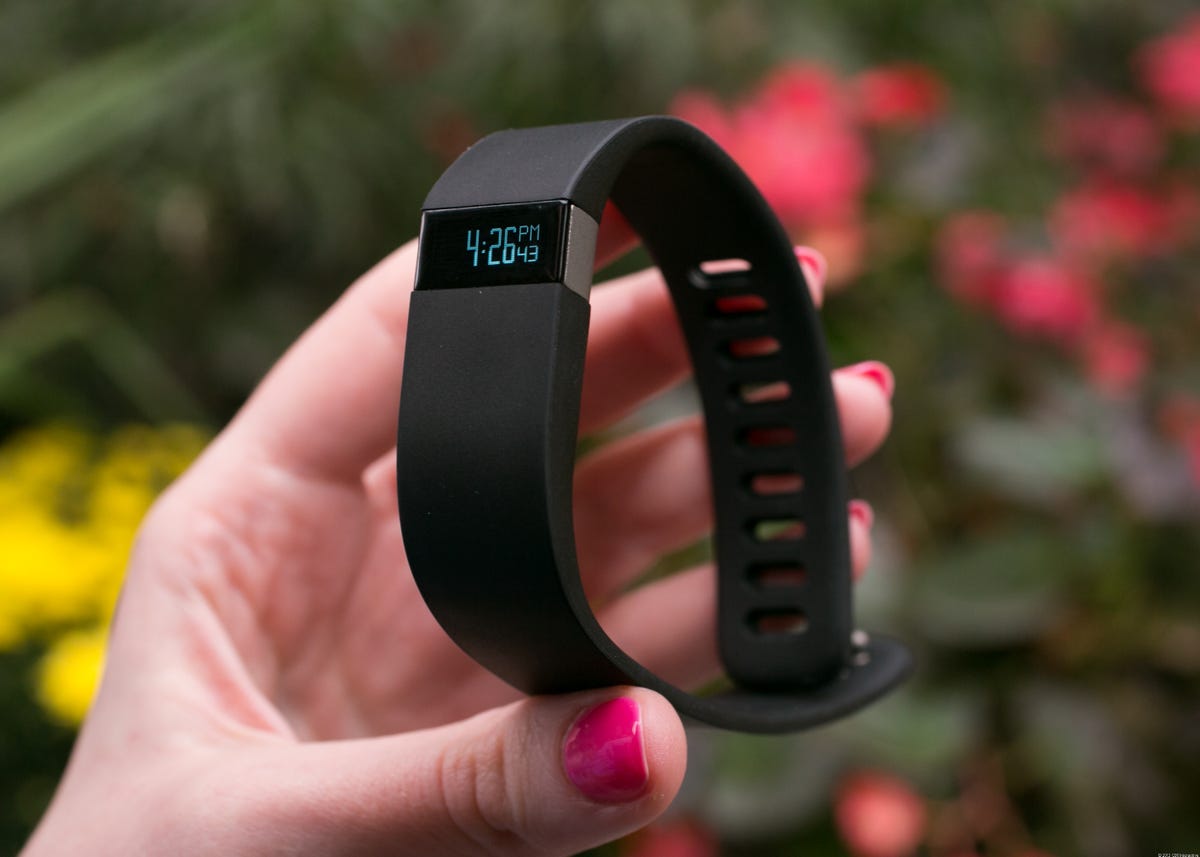

Now playing:
Watch this:
Fitbit designer Gadi Amit: wearables will help us become…
5:06
Gadi Amit is the president and principal designer at NewDealDesign, a San Francisco studio responsible for creating the look and feel of products such as the Fitbit, Lytro camera and yet to be released Project Ara smartphone.
Rather than having an army of wearables running up and down our sleeves, Amit predicts a consolidation where “wise” devices will give us relevant information when and where we need it.
This is an extended and edited transcript of a video interview with Amit that appears at the top of this page.
With Project Ara being modular by design, it gives the user so much control over its appearance and function. Does that affect how you approach the design of such a device?
The Google and Motorola guys came in and they wanted to have something that would appeal to six million people, and that people would be able to customise it. But through this discussion we actually discovered that we have many more people who are actually relevant, for instance people who are developing modules. We needed to create some sort of common system.
Throughout all these discussions we actually arrived at this arrangement: we call it “parcelling”. The term is actually taken from architecture, from town planning.
That terminology allows third parties to develop modules knowing that they will be respected and nobody will violate their footprint so to speak. That became a fundamental concept behind the winning design that is called the endoskeleton … then the design became a lot more directed and a lot more linear.
But at the beginning it was quite chaotic because there were very extreme opportunities. There was one very remedial opportunity which was a modular phone, essentially changing the colour to fit people’s tastes. But then on the other end there was a very extreme bespoke phone, that you will sit in a place and imagine an army of technologies next to you that will interview you, and create custom boards specifically for you, ad hoc. This was too demanding from the technology perspective. The winning solution, the endoskeleton, is close to that, but it is still relying on a lot of third parties developing fixed-size modules.
I really want to give a lot of credit to Paul [Eremenko] who led the project, who went along with that more philosophical and yet assertive, even aggressive approach. He wanted the best out of the project. But I’m also glad that through our process of discovering and having this dialogue about what it means to be modular that we arrived at a really good solution.

Motorola
It’s really interesting that you talk about compromising due to the demands of the technology. How much of an average project is compromise compared to what you want to release?
The core of what we do, we are doing technology architecture — physical architecture — and then we actually style it, but the core is actually thinking about what should go and what are the core physical manifestations of this architecture.
In doing so, we are actually allowing the clients to put the right hierarchy of importance around things, and this necessitates some compromise. But without us showing and explaining some alternatives, that discussion wasn’t happening.
There is an interesting thing in the work we do at NewDealDesign in that we expose the possibilities, and these are shown in physical form and are allowing the client to have that discussion about priorities about what should stay and what should go.
How do you see the future of wearable devices panning out? Are we going to see our daily lives measured by a multitude of devices running up and down our arms?
We are moving into a situation where these objects of electronic and digital thinking will become inherent to our existence. We already see that with the mobile phone, it’s the most personal object you have. With wearables it will grow even further.
Now most wearables will probably be hidden, and a lot of the Fitbits are hidden … they will have functions that are medical, about communication between you and people around you and environments around you. We are just at the beginning. It’s an interesting phenomena. There is a hype now about these [wearables].


Sarah Tew
They are very simple. They are basically kinetic motion sensors dealing only with cardiovascular health, but this is just the beginning. We will have things that are dealing with your brain, mental state, access privileges, a variety of medical conditions that could really be assisted by electronic online digital functions. So I could easily see that the peak of this wearable industry will come only in about ten years. They won’t be gadgets, they will be we are what we are.
So wearables will be fully integrated into our lives?
The interesting thing is when I say that, people immediately jump to the conclusion that we will be cyborgs.
My goal with designing this is that we won’t be cyborgs. We actually will become more human and more free from the technology.
What we have now in the design business is two camps: there is the camp that wants to create a lot of data and wants to analyse a lot of data; and there is the other camp which I belong to that tries to create devices that are not smart, they are actually wise. They are more than smart, they are wise enough to understand you, to filter and allow you to go on with your life with all their data processing in the background giving you hints of what is essential when it is essential.
These will be wise devices … they will allow you to be more human and less occupied with the digital world, which I think today requires quite a lot of attention.
Having designed a variety of wearables for different target markets such as the Whistle for dogs and the baby tracker Sproutling, how do you cater to vastly different end users?
It’s interesting. When you are designing for an animal like a dog, you are actually designing for the dog and the owner. In the case of Whistle … we are also designing it for the vet, because the vet could actually see the “state of mind”. They could actually understand what is happening with the dog.
We’re dealing with placements, where to put it.


C+N Creative (Natalie Eidelman / Cody Gantz)
With dogs, we dealt with issues of chewability, or not being chewable. With babies we’re looking at the delicacy of the skin and making sure that nothing is going to harm the baby. Peace of mind is very important for parents.
So each project, each one of these wearables has, if you wish, an ulterior motive. For the dog it’s the owner knowing that the dog is in good health and with the baby it is about the parents feeling at ease. With wearables like Fitbit it’s about you feeling confident about where you are as far as getting in shape.



